
Hey, all. It’s a dark, cold and rainy day over here, so the time has finally come to try out my Great-Great-Great Grandma’s Civil War Era pumpkin pie recipe.
See the recipe below.
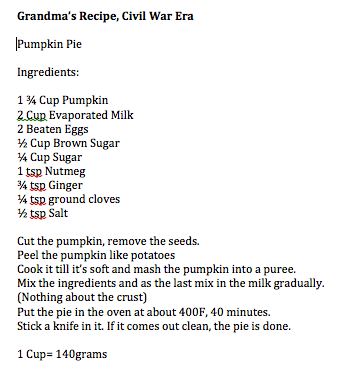
As I looked this recipe over, I did not doubt its provenance. It is old. Why would my Grandma say the recipe came from her mother’s Great-Grandma when it did not? She wouldn’t have. However, I was struck by the use of evaporated milk; I wondered when that ingredient came into widespread use. A simple Google search gave me my answer; evaporated milk became widely available in 1885. So my guess is that the recipe was modified for evaporated milk around 1890 or so.
Not such a big deal. Further research indicated that people used cream in pie-making before evaporated milk, so in the pie I am attempting today I substituted cream for evaporated milk. This is how it would have been made around the Civil War or earlier.
For those who had no milk cow, or did not have a subscription with the milkman, I can see why evaporated milk made sense. Shelf-stable and cheap. We really do take things like fresh milk for granted; this was not a given around the turn of the twentieth century.
But I’ll bet cream tastes better. We’ll see. If this pie tastes like I remember from twenty years ago, it’ll be different. Different in a good way.
OK, so let’s get down to brass tacks. How do you make a traditional pumpkin pie?
First, the pumpkin must be selected and prepared. We can skip the selection process because this came out of my garden. It is a Sugar Pie Variety small pumpkin, an heirloom seed type. I don’t mess with hybrids.
Split the pumpkin in two as shown. Pumpkins are tough, use a sharp knife and don’t cut yourself. Grab a stiff spoon and scoop out the seeds and strings. If you want, save the seeds for roasting or next year’s planting.
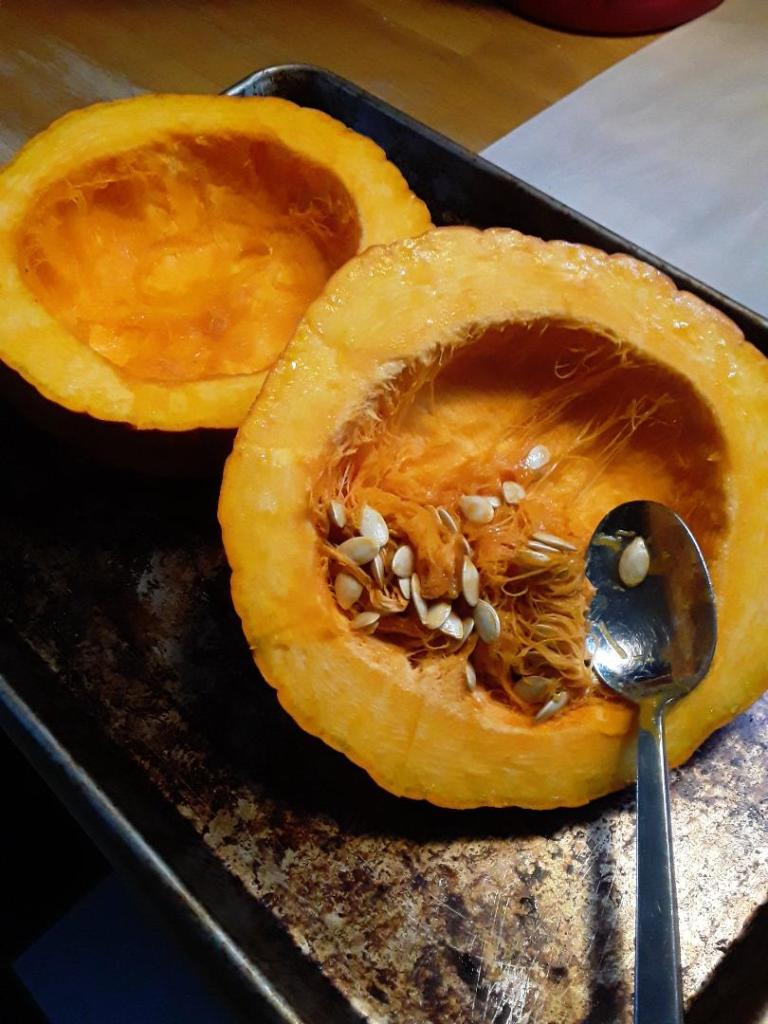
Once the pumpkin is cleaned out, grab a cookie sheet and put a piece of parchment paper on it. Place the two halves of the pumpkin on the sheet as shown. See why you must use a smaller pumpkin?
Preheat the oven to 400F (205C). When it is hot, place the pumpkin in there for about forty-five minutes.

You’ll know it when the pumpkin is done. A fork will stick right in. This would have been difficult in a raw pumpkin. Take the baked pumpkin out of the oven and let it cool down.
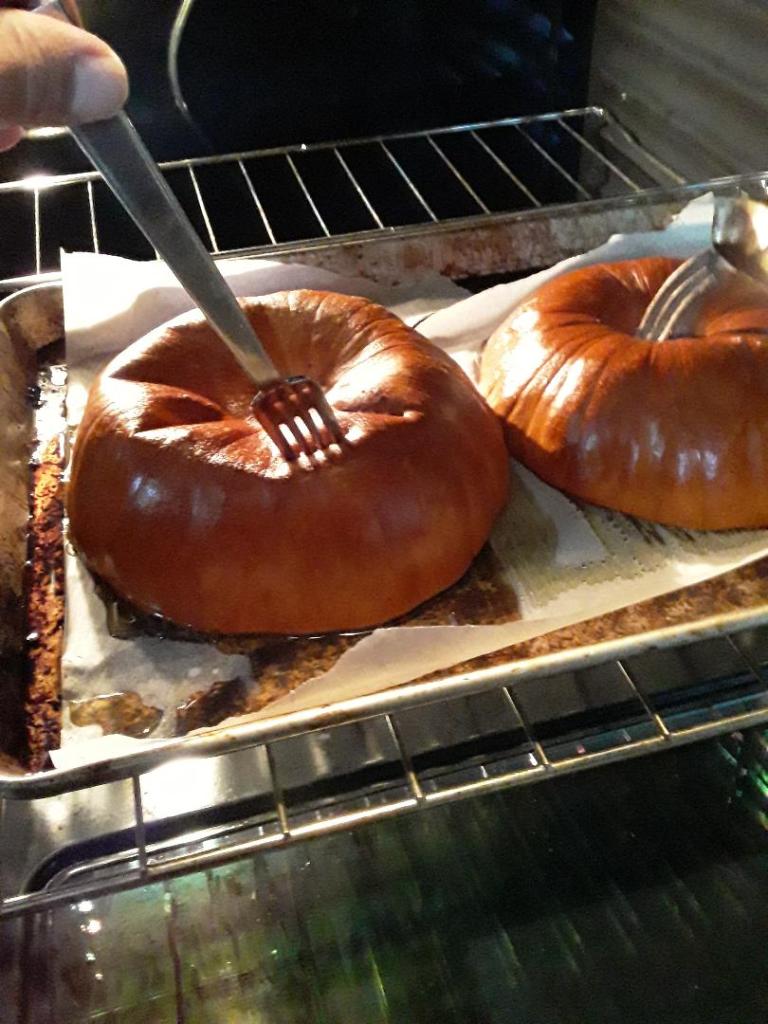
Note how the skin easily pulls away from the cooked pulp. This is desirable. See below.
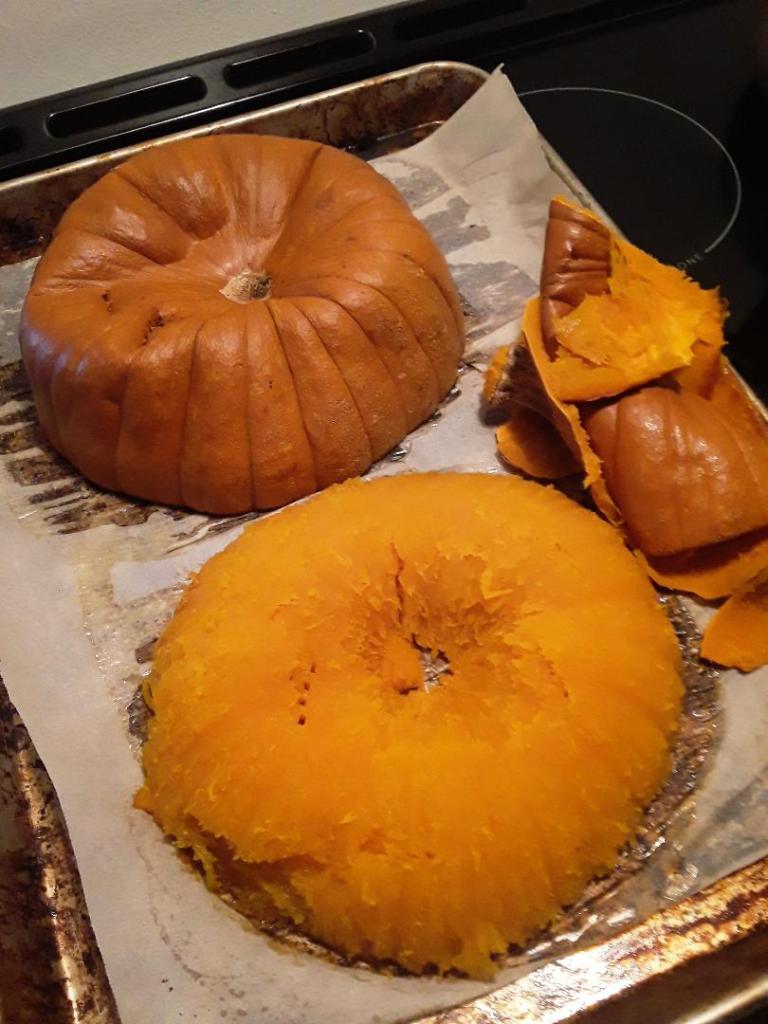
The pumpkin at this point smells pretty good. If you’d like, grab a chunk and eat it; it should be slightly sweet with a hint of caramel. One eight inch pumpkin will give you a plate full of pulp.

Now you need to process the pulp into a puree. You can do this the old-fashioned way, or be like me.
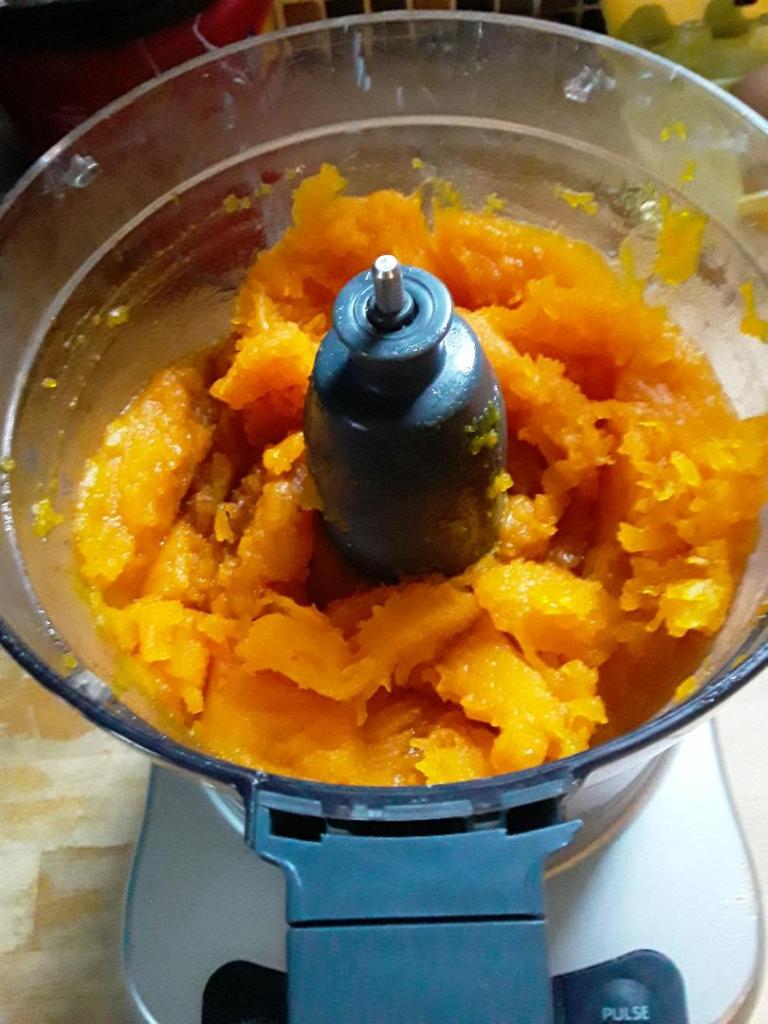
Jam that sucker into a food processor and hit “fast.” A minute or two later, and your fresh pumpkin is as fine of a puree as that gunk from a can. But yours is fresh. In my case, I remember planting the seed. There’s a certain satisfaction in that. See below.

There you go. This is what you were after when you picked up that little sweet baking pumpkin from the farmer’s market. Bright orange, fresh as heck, caramel-smelling pumpkin guts.
This. This is what the baker wants. This is what leads to delicious pies. Hopefully; I am a real novice. In any case, the eight-inch pumpkin yielded five cups of usable puree. According to the recipe, this is enough for a little less than three pies.
I want to do two pies, so this is good.
One pie will use the 19th century recipe; the other one will use Grandma’s WW2 era recipe.
The recipes are different; to lower the number of variables I’ll use the fresh puree and cream in both and I’ll see which my family prefers in a taste test.
All I’m waiting on now is for the chickens to lay some eggs.
Waiting on eggs? Yeah, seriously. With the approaching winter the chickens have gone into their fall molt and egg production is down.
But that’s OK. I’ll stick the puree in the fridge.
All good things come to those who wait.
Stay tuned…
I wonder about the taste compared to canned pumpkin especially, since canned pumpkin puree is usually actually made from a variety of squashes
LikeLike
I didn’t know that! I have known people who sneak in sweet potatoes, though. My mother-in-law made pies from the Civil War recipe years ago- I remember it was NOT like a store bought pie at all. Less sweet, earthier, if that makes any sense. But yeah. I get a couple more eggs and this is a done deal- of course I’ll write up the entire process. J
LikeLike